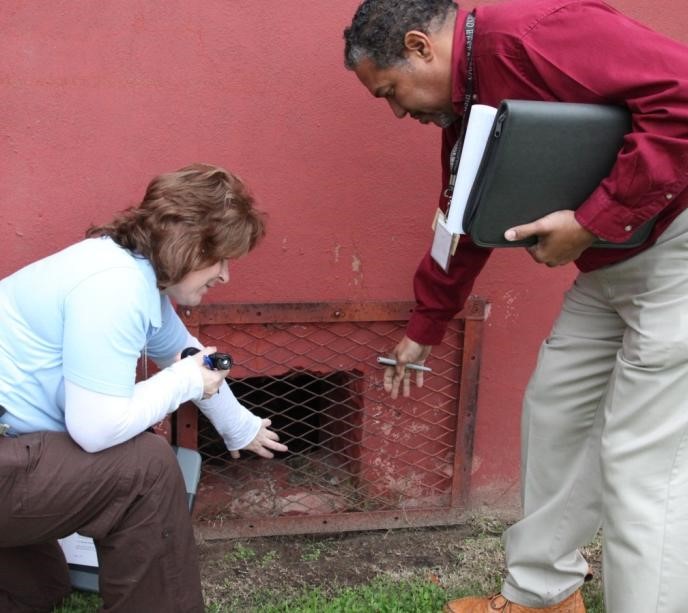|
||||||||||||||||||||||||||||||||||||||||||||||||||||||||||||||
| ||||||||||||||||||||||||||||||||||||||||||||||||||||||||||||||
Wednesday, August 20, 2014
School IPM 2015 Newsletter: August 2014
Friday, August 15, 2014
EPA E-newsletter: Integrated Pest Management (IPM) In Schools
| |||||||||||||||
Thursday, August 14, 2014
School Pest News, Volume 13, Issue 8, August 2014
|
School
Pest News, Volume 13, Issue 8,
August 2014
|
|
|
To provide the best professional integrated pest management
training and advice for school districts and other environmentally sensitive
institutions in Texas and the Southwest.”
Texas A&M AgriLife Extension Service
School IPM Program
|
|
|
|
In this Issue
·
AgriLife Extension entomologists: Avoidance,
exclusion, repellent's best practical defense against mosquitoes
·
Just
in time for school: New pest control calculator now available for maintenance
professionals
|
|
Applicator Licensing Requirements in TX (By: Janis Reed)
Licensing
questions are extremely common with applicators in Texas. Often applicators
are unsure which type of license they need from of the Texas Department of
Agriculture (TDA), an agriculture license or a structural license.
Additionally, as outsourcing of services becomes more and more common,
transitioning between utilizing using staff to manage pests, to hiring
outside pest management companies can be confusing for both the pesticide
applicators as well as administration. To make matters worse, changes in the
licensing requirements that occur during outsourcing can confuse interested
parties as well.
A
common conundrum faced by both applicators and administration is which type
of license an applicator should obtain to apply pesticides around schools. In
general, the answer is simple. If an applicator is going to make applications
outdoors ONLY, to control turf pests and weeds, licensing through the TDA on
the agriculture side is appropriate. In this case, the applicator should hold
a license in the 3A category (Lawn and Ornamental). However, if pesticide
applications are going to be made indoors or around buildings, with the
intention to control structural pests, it becomes appropriate to be licensed
through the Structural Pest Control Service and hold a license in the pest
category.
To
continue reading this story click on this link
Chikungunya, a viral disease transmitted
by mosquitoes, has been identified in five Texas counties — four of them in
South Central Texas — and may become endemic to the state, according to Texas
A&M AgriLife Extension Service entomologists.
As far as the Texas cases are concerned,
at this time it appears in each instance the disease was contracted in one of
the countries where it is more common, said Sonja Swiger, AgriLife Extension
entomologist at the Texas A&M AgriLife Research and Extension Center in
Stephenville.
“The first confirmed case of the disease
in Texas was in Williamson County, and the most recent confirmed case was in
Bexar County,” said Molly Keck, AgriLife Extension entomologist and
integrated pest management specialist, Bexar County.
According to the Texas Department of
State Health Services, cases have also been confirmed in Gonzales, Travis,
and Harris counties.
The Centers for Disease Control and
Prevention website notes chikungunya is not considered fatal, but can have
serious symptoms, including severe joint pain and swelling, fever, muscle
pain, headache and rash. Those most at risk are the very young; people over
65 and individuals with chronic medical conditions. The virus is not spread
from person to person, and there is no treatment other than managing the
symptoms.
To
continue reading this story click on this link
Maintenance professionals gearing up for
the start of school now have a new tool to help defend students from the
inevitable summer influx of undesirables roaming the halls.
The Texas A&M AgriLife Extension
Service’s new integrated pest management website, http://ipmcalculator.com, offers school
staff members in charge of pest control a wealth of practical information on
managing rodents, birds, cockroaches, ants and a plethora of other unwelcome
denizens, said Janet Hurley, AgriLife Extension integrated pest management
program specialist at Dallas.
“The cost calculator, available free on
the website, allows the user to assess various pest risks on their school and
district levels,” Hurley said. “The resulting information will be a big help
for those responsible for developing a budget for a school integrated pest
management program.”
Hurley said using the calculator is as
simple as entering the school’s location, presence of pests and the
facility’s condition. The calculator then gives an overall pest risk estimate
for the school.
“The calculator also has features that
allow you to create your own budget to see how improving certain features
will affect the overall pest risk,” she said.
The cost calculator doubles as an
excellent teaching tool because many aspects of general building maintenance
also relate to pest issues, Hurley said.
To
continue reading this story click on this link
|
|
|
Remember to share this newsletter with your school staff
and co-workers
To join or leave this listserv, reply to this e-mail with
SUBSCRIBE OR UNSUBSCRIBE in the subject heading of the email
Educational programs of the Texas A&M AgriLife
Extension Service are open to all people without regard to race, color, sex,
religion, national origin, age, disability, genetic information, or veteran
status.
|
|
Subscribe to:
Posts (Atom)









